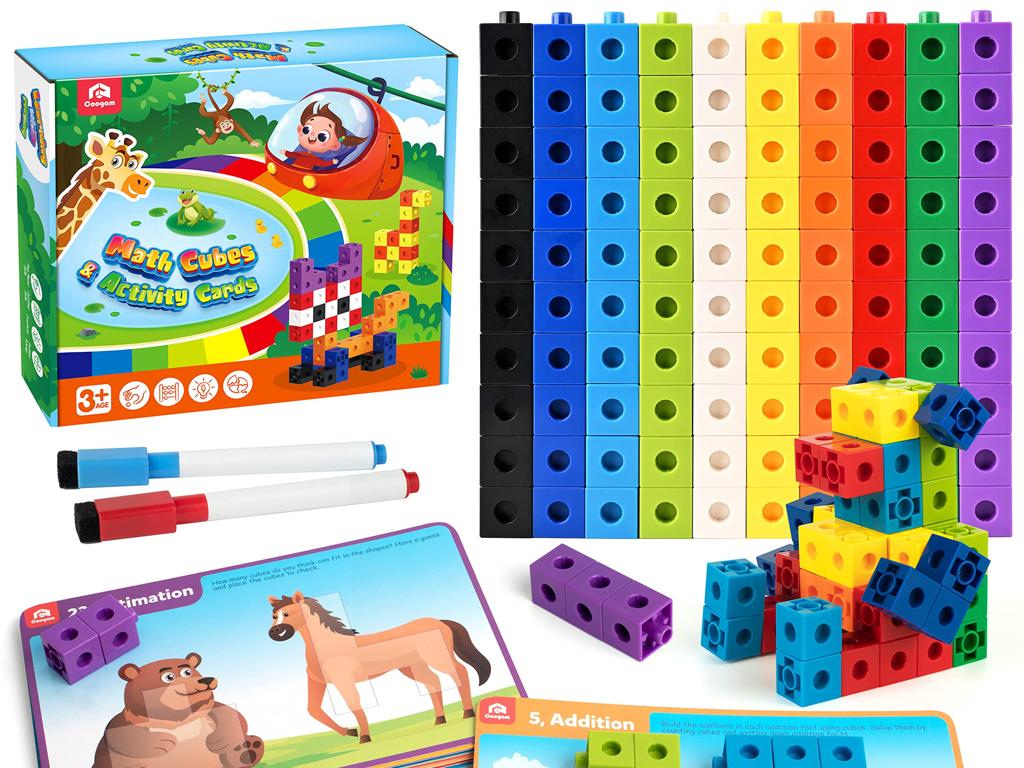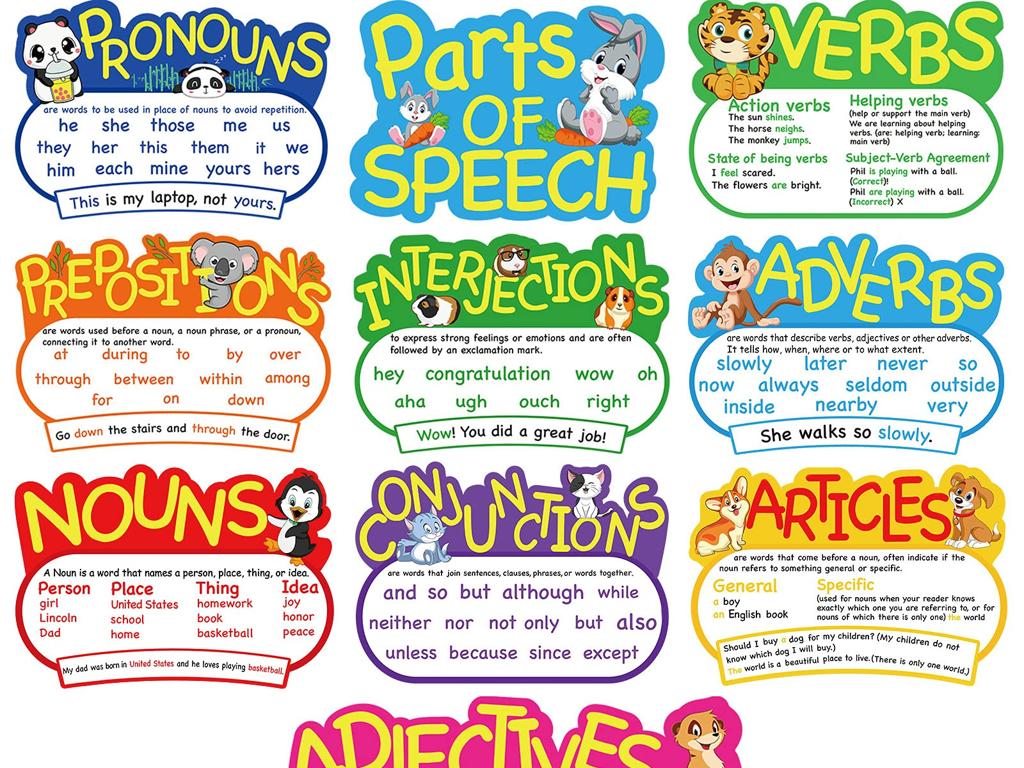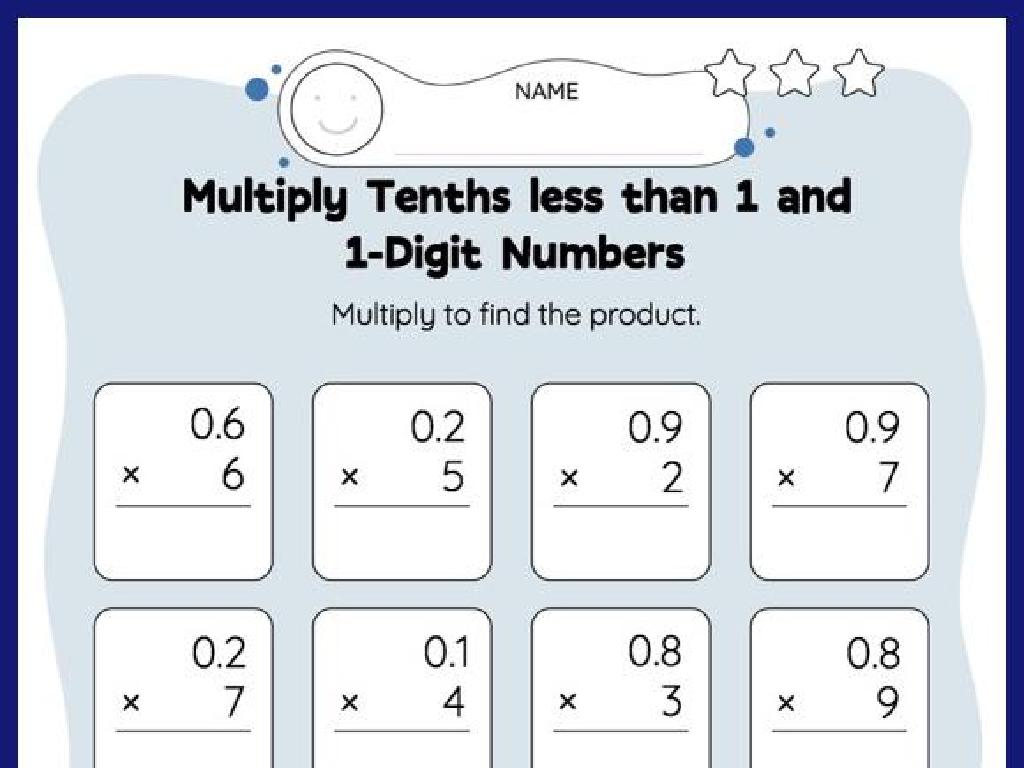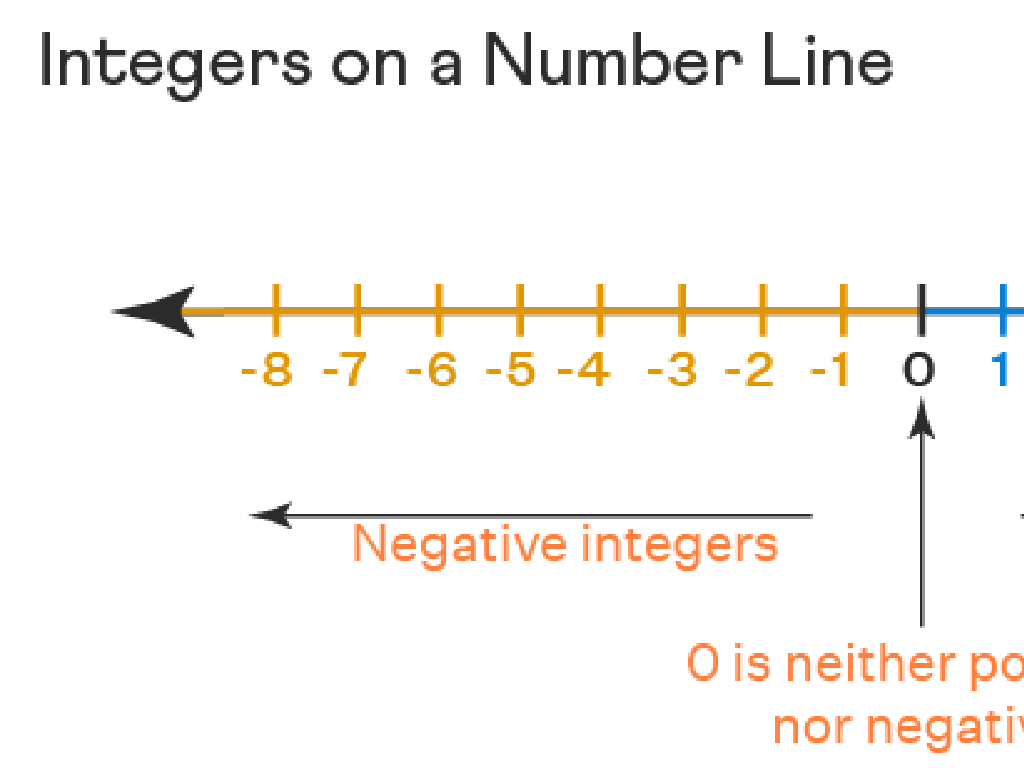Area Of Compound Figures
Subject: Math
Grade: Fifth grade
Topic: Area
Please LOG IN to download the presentation. Access is available to registered users only.
View More Content
Exploring Area: Compound Figures
– What is area?
– Area measures the space inside a 2D shape.
– Area of rectangles and squares
– Recall: Area of rectangle (length × width), square (side × side).
– Compound figures: combining shapes
– Shapes made by joining rectangles/squares together.
– Calculating area of compound figures
– Add areas of simple shapes to find total area.
|
Begin with a brief explanation of what area is and its importance. Recap the formulas for finding the area of simple shapes like rectangles and squares, which the students are already familiar with. Introduce the concept of compound figures as combinations of these simpler shapes. Explain that the area of compound figures can be found by calculating the area of each simple shape and then adding them together. Provide examples of compound figures and demonstrate how to break them down into simpler shapes to calculate the total area. Encourage students to think of compound figures as puzzles that need to be solved piece by piece.
Exploring Compound Figures
– Define compound figures
– A shape made up of two or more simple shapes, like rectangles, triangles, etc.
– Real-life compound examples
– Examples: swimming pools, gardens, and park layouts
– Break down into simple shapes
– Divide the figure into familiar shapes to find the total area
– Calculate area of each shape
|
This slide introduces students to the concept of compound figures, which are shapes that consist of two or more simple shapes combined. Use relatable examples such as the layout of a swimming pool or a garden to illustrate compound figures in real life. Teach students how to break down these figures into simpler shapes, such as rectangles and triangles, to make it easier to calculate the total area. Emphasize the importance of recognizing familiar shapes within compound figures and using their knowledge of how to calculate the area of these simpler shapes to find the total area of the compound figure. Provide practice problems where students can apply this method to find the area of various compound figures.
Calculating Area of Simple Shapes
– Area formula for a rectangle
A = length × width. Example: 5m × 3m = 15m²
– Area formula for a square
A = side × side. Example: 4m × 4m = 16m²
– Practice finding rectangle area
Use the formula to calculate a rectangle’s area.
– Practice finding square area
Use the formula to calculate a square’s area.
|
Begin with a review of the area formulas for rectangles and squares, ensuring that students recall that area is measured in square units. Provide clear examples for each shape. For the practice problems, present a rectangle and a square with given dimensions and ask the students to apply the formulas to find the area. This will reinforce their understanding of the concept of area and prepare them for more complex compound figures. Encourage students to explain their process as they work through the problems to solidify their comprehension.
Decomposing Compound Figures
– Break down compound figures
– Identify simple shapes inside
– Look for rectangles, triangles, circles, etc.
– Color code each shape
– Use different colors for clarity
– Example: Decompose a figure
– A house shape: rectangle body, triangle roof
|
This slide introduces the concept of decomposing compound figures, which is a strategy to find the area of a complex shape by breaking it down into simpler, more manageable parts. Students should learn to visually dissect a compound figure into basic shapes they are familiar with, such as rectangles, triangles, and circles. Encourage them to use color-coding as a way to differentiate between the shapes. Provide an example, such as a house with a rectangular body and a triangular roof, to illustrate how to decompose a figure. In the next class, students can practice this skill with various compound figures and share their methods of decomposition and area calculation.
Calculating Area of Compound Figures
– Break down into simple shapes
– Calculate area of each shape
Find area of rectangles, triangles, etc.
– Add areas for total space
Combine areas to see the whole figure’s size
– Example: Area of a compound shape
Let’s find the area of a figure made of a rectangle and a triangle together
|
When teaching students to calculate the area of compound figures, start by explaining how to identify and separate the figure into simpler shapes, such as rectangles, triangles, and circles. Then, guide them through calculating the area of each simple shape using the appropriate formulas. Afterward, demonstrate how to add or subtract these areas to find the total area of the compound figure. Use an example, such as a figure that includes a rectangle and a triangle, to illustrate the process. Provide the dimensions, calculate the area of each shape, and then add them together to find the total area. This will help students understand how to approach compound figures systematically.
Practice: Area of Compound Figures
– Work on practice problems together
– Steps to find compound figure areas
– Break down figures into simple shapes, calculate each area, then sum them up.
– Discuss challenges faced
– Share difficulties in the process, learn from each other.
– Address any questions
– Clarify doubts, ensure understanding before moving on.
|
This slide is designed to engage students in active practice of calculating the area of compound figures. Start by solving a few problems as a class to demonstrate the process. Encourage students to participate by asking them to identify the simple shapes within a compound figure and to calculate each area separately. Summing these areas will give the total area of the compound figure. Open the floor for students to discuss any challenges they encounter and to ask questions. This collaborative approach helps students learn from each other and reinforces their understanding. Provide guidance and support throughout the activity, and be ready with additional examples if needed. The goal is to ensure that by the end of the practice, all students are comfortable with the steps to find the area of compound figures.
Class Activity: Crafting Compound Figures
– Create your own compound figure
– Calculate the area of your figure
Use formulas for rectangles, triangles, etc., to find the total area.
– Share your figure with the class
– Discuss the different areas found
Explain how you calculated the area and learn from others.
|
This activity is designed to reinforce the concept of area in a hands-on manner. Students will apply their knowledge of area calculation for simple shapes to create a more complex compound figure. Provide them with materials such as graph paper, rulers, and shape templates to aid in their creations. Once they have designed their figures, guide them through the process of breaking down the figure into simpler shapes, calculating the area of each, and then summing those areas to find the total. After calculations, students will present their figures and explain their process to the class, fostering a collaborative learning environment. Possible activities include creating figures with specific area constraints, challenging students to find the figure with the largest or smallest area, or having them exchange figures to calculate each other’s areas.
Wrapping Up: Area of Compound Figures
– Recap: Area calculation methods
– Understanding area is crucial
– Area measures the space inside a 2D shape, important for real-world problems
– How area applies to real life
– Examples: flooring in homes, land size, or surface for painting
– Next lesson: Area of Irregular Shapes
|
As we conclude today’s lesson, it’s important to review the key concepts of calculating the area of compound figures. Emphasize to students that understanding area is not just a mathematical skill but a practical tool used in everyday life, such as determining the amount of paint needed for a wall or the carpeting for a room. Relate the concept to real-world applications to solidify their understanding. Looking ahead, prepare the students for the next lesson on the area of irregular shapes, which will build on their knowledge of area and challenge them to apply it to less structured figures. Encourage them to bring examples of irregular shapes they encounter in their daily lives to the next class.






